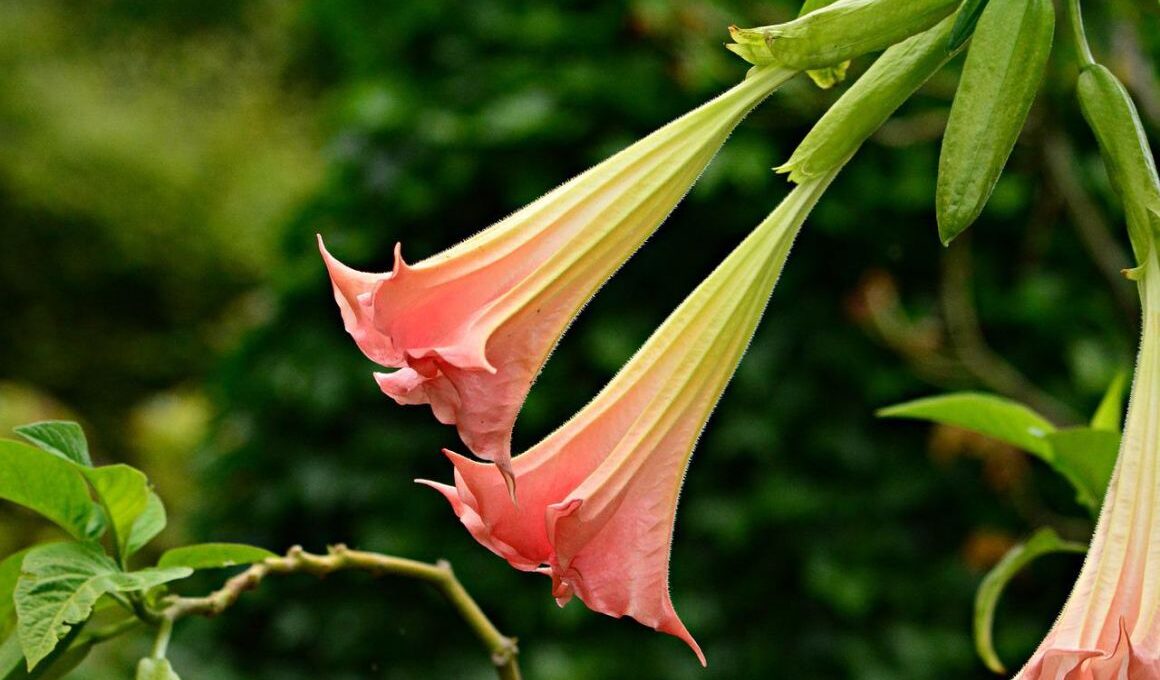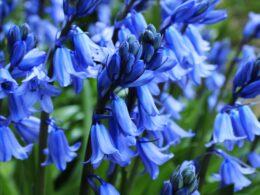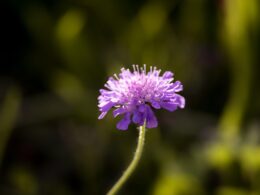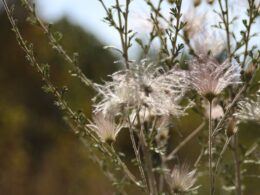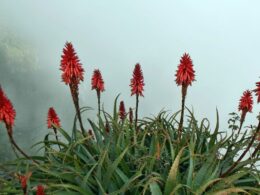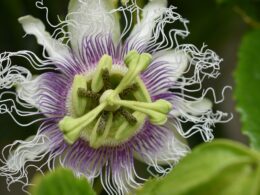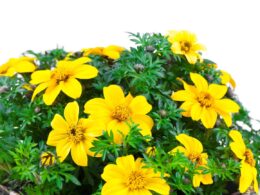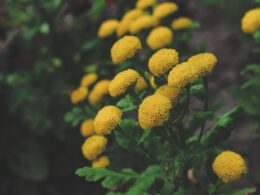What Is an Angels Trumpet Plant?
The Angels Trumpet Plant, also known as Brugmansia, is a beautiful tropical plant that produces large, fragrant flowers. The leaves and flowers are poisonous, but they make beautiful ornamental plants. The name Angel’s Flower is derived from the trumpet-shaped flowers that hang down from the stems. The flowers are said to resemble angels in flight. Sometimes the name “Angel’s Flower” is used to refer to the related genus Datura.
Angels Trumpet Flower: Appearance
Angels trumpet flower is fast-growing, woody shrubs or small trees. They can grow to a height of 3–11 m (9.8–36.1 ft). The leaves are alternate, simple, entire, and 10–30 cm (3.9–11.8 in) long and 5–18 cm (2.0–7.1 in) broad, with a petiole 5–15 cm (2.0–5.9 in) long. The flowers are pendulous and strongly scented, with colors ranging from white to pink, orange, or yellow, and blooming throughout the day and night. Each flower is 14–40 cm (6–20 in) long, with a five-lobed corolla and prominent central stamens.
Angels Trumpet Flower: Distribution and Habitat
Brugmansia is a genus of seven species of flowering plants in the family Solanaceae. They are woody trees or shrubs, with pendulous flowers. Native to tropical regions of South America, they can be found as far north as Mexico and the Caribbean. Brugmansia species grow in a variety of habitats, from rainforests to high-altitude Andean slopes.
Angels Trumpet Toxicity
Angels trumpet plant is a beautiful flowering plant that can add a touch of elegance to any garden. However, the plant is also highly toxic, and ingestion of even small amounts of the plant can lead to serious health problems. The plant contains a number of toxic compounds, including scopolamine and atropine.
Symptoms of Intoxication
The symptoms of intoxication by angels trumpet flower are very serious and can even lead to death. They include: large pupils, dry mouth, flushed skin, dizziness, confusion, hallucinations, delirium, and coma. If you experience any of these symptoms after being in contact with Brugmansia, seek medical help immediately.
Why Do People Choose to Keep Angels Trumpet Flowers?
For some, the plant’s beautiful, trumpet-shaped blooms are a major draw. Others may be attracted to the fact that angel’s trumpet is relatively easy to care for, or they may appreciate its sweet fragrance. Whatever the reason, angels trumpet has been a popular houseplant for centuries.
In addition to being lovely to look at, angels trumpet is also known for its mystical properties. Some believe that the plant can induce prophetic dreams, and it has even been used in some traditional shamanic rituals. Whether you believe in its powers, there’s no denying that angels trumpet is a fascinating plant with a long and storied history.
How to Care For Angels Trumpet Flower?
When watering an angel’s trumpet, be sure to use lukewarm water and avoid getting the leaves wet, as this can lead to fungal growth. The plant should be fertilized bi-weekly with a balanced fertilizer during the growing season. During the winter months, angel’s trumpet should be kept dry and in a location where it will not receive any frost damage.
Common Problems With Angels Trumpet Flower
Though they are beautiful, these plants can be quite problematic. The most common issues include leaf drop, diseases, pests, and inadequate drainage. Leaf drop can be caused by several factors, including stress, nutrient deficiencies, and temperature changes. Angels trumpet flowers are also susceptible to a variety of diseases, such as powdery mildew, root rot, and leaf spot. Pests such as white flies, aphids, and mealybugs can also cause problems. In addition, brugmansia need well-drained soil to thrive. If the roots are constantly wet, they will start to rot.
How to Grow Brugmansia?
Here are a few tips to help you successfully grow this delicate flower. First, make sure to plant the bulbs in well-drained soil. The bulbs are very sensitive to rot, so it’s important to make sure they’re not sitting in wet soil. Second, water the bulbs regularly, but don’t overdo it. Too much water can also cause the bulbs to rot. Third, fertilize the bulbs once a month during the growing season. This will help them develop strong roots and produce more blossoms. With a little care and attention, you can successfully grow Angels Trumpet Flowers in your own garden.
Brugmansia’s Companion Plants
Companion plants are plants that have a beneficial relationship with each other. They can provide support, deter pests, attract pollinators, or improve the soil quality. When choosing companion plants for brugmansia, it is important to consider the plant’s needs. Brugmansia need full sun and well-drained soil. They are also heavy feeders and will benefit from regular fertilizer applications. Good choices for companion plants include abutilon, frangipani or neoregelia.
When Does Brugmansia Bloom?
Most people are familiar with the classic trumpet-shaped flowers of Brugmansia, but what they may not know is that these beautiful blooms only appear at certain times of the year. In general, Brugmansia will bloom from spring through fall, with the peak season being mid-summer. However, there can be some variation depending on the specific variety of plant.
Brugmansia as an Ornamental Flower
In recent years, interest in Brugmansia has grown among gardeners and landscapers due to its beautiful flowers. However, because of its toxicity, it is important to take care when planting and handling this plant. Today, Brugmansia is commonly grown as an ornamental flower in many parts of the world. The plant is relatively easy to care for, and it can thrive in a variety of climates. Given its showy blooms and impressive height, it’s no wonder that Brugmansia is such a popular choice for those looking to add a touch of beauty to their landscape.





